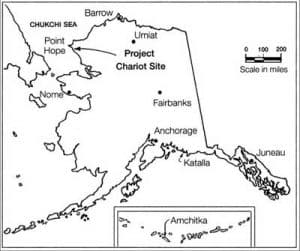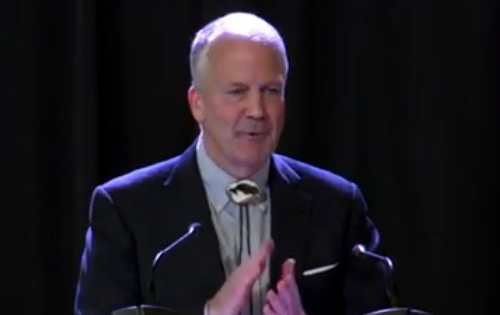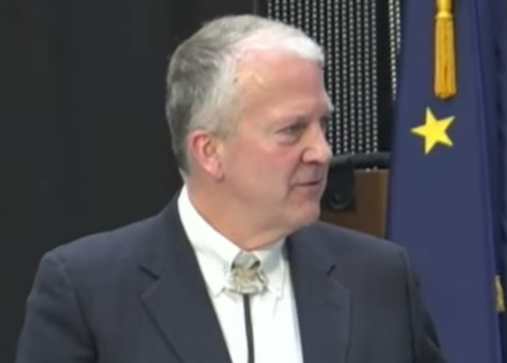
Humans living in Northwest Alaska have for the past five millennia had to face and overcome challenges to their way of life and to life itself. Eking out a living in a region which can be iced over for as much as nine months of the year requires discipline, imagination, and determination. The Inupiat people dwelling there have defied everything from climate change to species depletion to the taking of their lands by outsiders. In 1957 something new came to their land: government bureaucracy gone haywire. The danger posed by the federal government’s Project Chariot eclipsed every previous threat to the Inupiat, both in its scale and its insanity.
There have been semi-permanent settlements in Inupiat territory for at least thirty-five hundred years, hunting seal, bowhead whale, caribou and fish to survive. Beyond simple survival they have prospered, having become adept at exploiting and utilizing their environment and much of what it offers. Using the inflated bladders of various sea mammals to help tire out sounding whales, stitching seal skins together and fastening them to boats, the Inupiat would use bone, rock, ivory, wood, muscle, skin, and whatever else they could to fashion weapons, tools, and clothing with.
Many of these “very honest, extremely good-natured, and friendly” people still lived in subterranean sod-covered houses heated by oil-lamps in 1957. That year the first official project of the US government’s Operation Plowshare set its sights on Cape Thompson on the Chukchi Sea. Operation Plowshare was conceived by the Atomic Energy Commission and was birthed on June 17 that same year. Assigned the seemingly innocuous mission of harnessing nuclear power for practical and peaceful purposes, Plowshare scientists working out of the University of California decided that large earth excavations yielded the best potential for the fledgling atomic industry.
The plan, as advocated by “the Father of the Hydrogen Bomb,” Edward Teller, was to remove up to seventy thousand cubic yards of earth by detonating a series of nuclear weapons buried deep in the ground. Teller and a group of AEC scientists and bureaucrats visited Alaska in 1958 to sell their idea to the Alaskan people. Many of whom were in favor of it. At the time federal spending accounted for sixty percent of all employment in the territory (Alaska wouldn’t be a state until the following year) and the five million dollars the AEC promised to bring with them were attractive. Project Chariot had, after all, come from Operation Plowshare, which was, at its core, a public-works program. Further, the AEC representatives said that an environmental impact assessment would be conducted prior to any blasting. Alaska seemed to be on board and the drilling of eight large holes in the bedrock was set to begin.
The AEC asked the United States Geological Survey for a report on geological factors which project planners would have to account for. It also requested a study from the University of California for the potential of lucrative mineral deposits in the area. Not having secured any funds for travel expenses for either the USGS or the UC the resulting reports filed by both groups were based only on relevant literature, no local investigations were performed. The USGS report stated that almost everything in the Northwest Alaskan coast is geologically unexplored and covered in ice nine months of the year. The UC reported that “substantial” quantities of oil and coal were “believed” to be in the area. Many people, especially in Alaska, began doubting the wisdom of the plan.

Leading the charge was newspaperman Howard Rock and his weekly Tundra Times. For awhile the only newspaper providing anything but unquestioning support of Chariot, the Times energized Native groups and by years’ end the Inupiat Paitot (People’s Heritage) was formed. Teller and the AEC had repeatedly claimed that the entire project was to be conducted with complete public transparency but the public was quickly coming to doubt this. In particular the effects of radioactive fallout were causing concern among many Alaskans. A University of Alaska professor wrote a letter to the editor of the Fairbanks Daily News-Miner excoriating the AEC and their denial of potential harm related to fallout. In contrast, the News-Miner’s editor opined that Chariot would “center world scientific and economic attention on Alaska just at the time when we are moving into statehood and inviting development.”
This then was how the debate was being framed, economic development or stagnation: a false dichotomy. Some politicians were asking how much economic development would occur at a harbor covered in ice for three quarters of the year. Others were pointing out how much fuss Nevada had been making over the federal governments continued use of that state’s land for nuclear testing. Fishermen and Native groups suggested that potentially disrupting a huge source of employment and sustenance for residents, fish, was not worth a paltry five million dollars and a possibly useless harbor. Washington was concerned that a series of nuclear detonations just one hundred eighty miles from the Soviet Union would perhaps stir some international consternation.
Even with the reluctance of the Alaskan people, the opposition of the USSR, and the unlikelihood of economic reward, the AEC still wanted to continue with Chariot. Revising their language from artificial harbor to experiment and reducing the size of the nuclear payload from megatons to kilotons, the AEC continued peddling their proposal to lawmakers in Juneau and D.C. Although the AEC had previously enjoyed the support of the Alaska House of Representatives, the Fairbanks Chamber of Commerce and Alaska’s Congressional delegation, the agency’s disseminations were undermining Chariot. Lobbying efforts by Native groups and the infant national environmentalist movement were highlighting the mistakes and omissions made by the AEC. When pressed for a reason why Alaska was chosen for the experiment, the AEC replied that “the project is located in the wilderness, far away from any human habitation.” This must have come as a surprise to the Inupiat towns of Kivalina and Point Hope, both not even forty miles from of the site, the inhabitants of which had never been informed of the plan, let alone consulted.

The Inupiat cause was quickly transforming into a national and international cause célèbre. Operation Plowshare was just as rapidly losing supporters on all levels and the AEC severely curtailed the scope of the project. In 1962 some spent nuclear material from a previous explosion in Nevada was delivered to Cape Thompson and experiments conducted on it. The remaining nuclear material was deposited in the Earth and buried for the next thirty years. Apparently intent on blowing up something in Alaska however, the AEC sequestered the Aleutian island of Amchitka and used it for a number of underground nuclear tests. The last such detonation was in 1971.
In the end Operation Plowshare had cost millions of dollars, environmental damage to the area and two University of Alaska professors their jobs. However the episode push-started Alaska Natives into more aggressive and intense self-protective measures, highlighting their situation to such a degree that just six years later the Alaska Native Claims Settlement Act was passed through Congress. The national and international environmentalist movement can be said to have come into its own as a direct result of Project Chariot. The Project Chariot Bioenvironmental Committee’s final reportprovided a template for the, now standard, environmental impact statements made mandatory by the National Environmental Policy Act of 1969. The two blacklisted professors received honorary degrees from UAF in 1993.
Sadly, no one from the AEC ever offered an apology to the Inupiat people they were willing to consign to a radioactive future. In fact, Edward Teller remained indignant about the affair for the rest of his life. He felt that the discovery of oil in Prudhoe Bay vindicated him, saying in 1987 that before the oil strike “Nobody was there.”
Someone should tell the Inupiat that.






